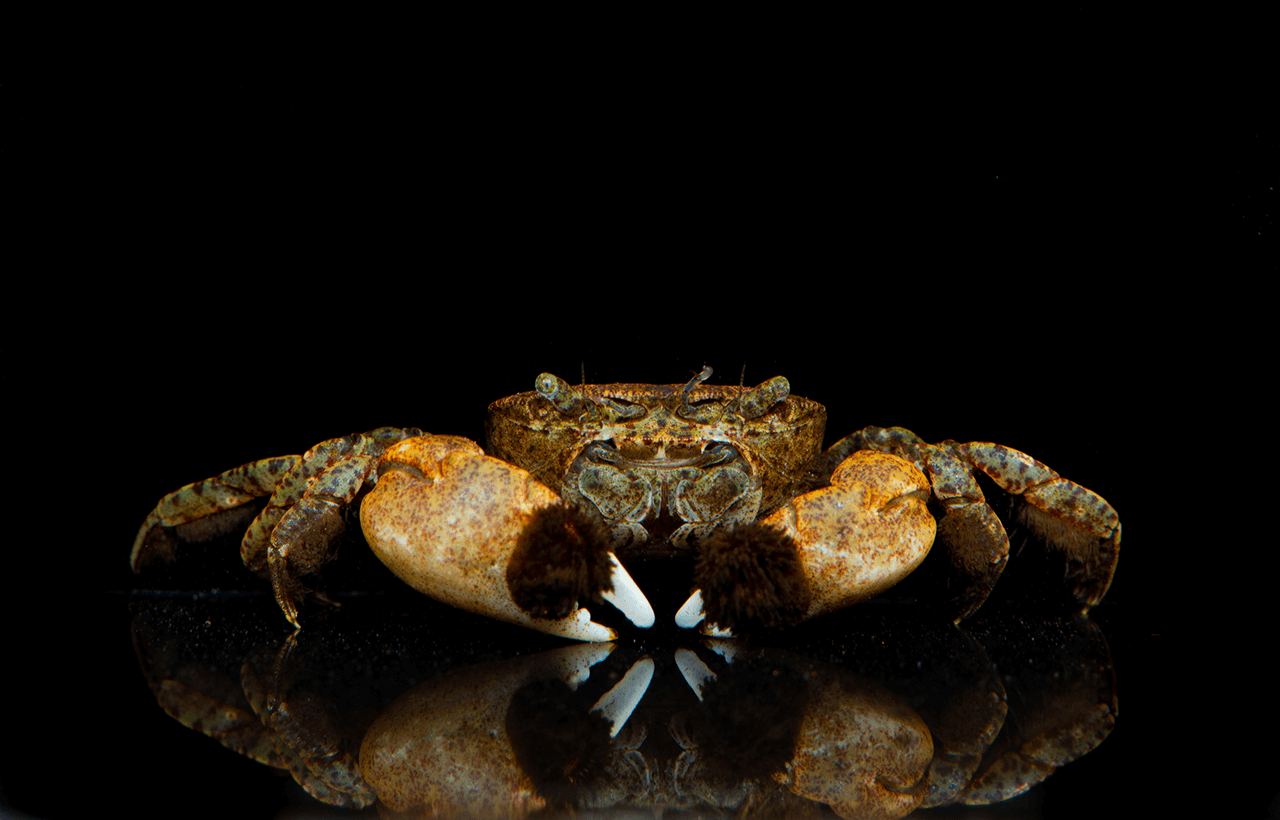- Size: 2 - 3cm
- Temperature: 22 - 30℃
- pH: 6.5 - 8
- Hardness: 18 - 90 ppm
- Country of Origin: India to Western Pacific region
Ptychognathus spp. is a group of small and medium-sized brackish crabs, distributed from India to Western Pacific region; its body length is about 2 to 3 centimeters, and it has nearly 30 species, mostly living in the gravel space of estuarine slow-flow areas. Their body color widely varies and usually appears to be brown, yellow or white, with some leopard or insect patterns. Because most of their male chelipeds have densely clustered feather-like fluff, which resembles cheerleaders’ colored balls, Ptychognathus spp. is called “Pom Pom Crab” in the aquarium market. In Taiwan, currently there are 9 species of Ptychognathus spp. being recorded. However, due to the similarity in shape and body color among each species of the genus, it is difficult to distinguish them from appearance; so normally it is sold under the name of P. barbatus (the first species of Ptychognathus spp. recorded in Taiwan). Pom Pom Crab adapts to water with 22-30°C, pH 6.5~8. As an omnivorous creature, it usually feeds on algae, plant scraps, residual bait and biological corpses in the aquarium, so it is suitable to play a role as a scavenger in aquariums to maintain ecological balance. When it comes to keeping, Pom Pom Crab with good adaptability is suitable to be kept with most small fish; however, because it tends to be timid in nature, ornaments (such as rock, dead woods, and etc.) can be placed in its living environment as hiding spots. In addition, Pom Pom Crab is good at climbing, so aquariums must be covered with lids to prevent it from escaping. Although Pom Pom Crab can survive in fresh water, its larva must grow in sea water; therefore, it is difficult to breed it in aquariums. Currently the Pom Pom Crabs on the market mainly rely on wild individuals by fishing.


